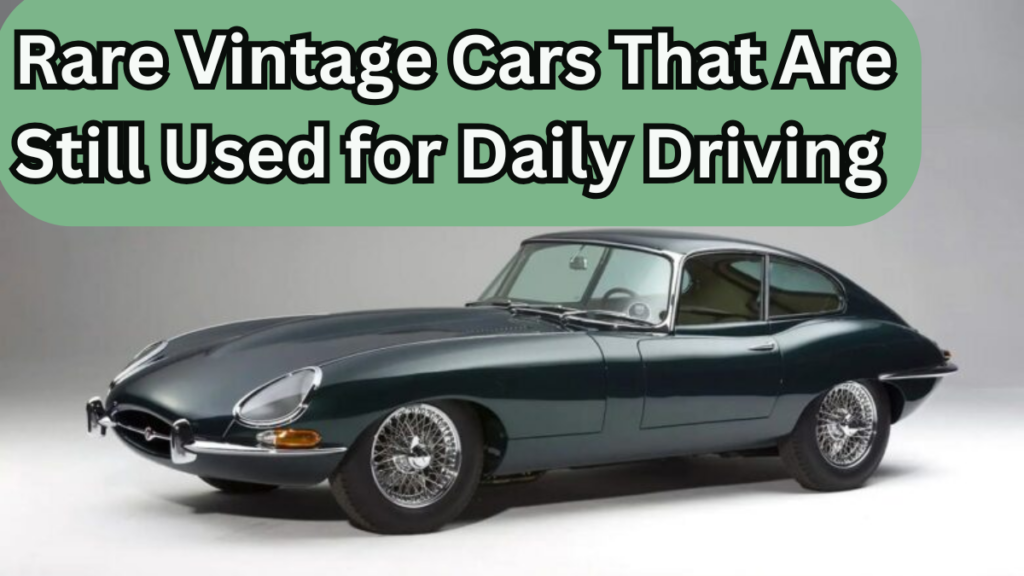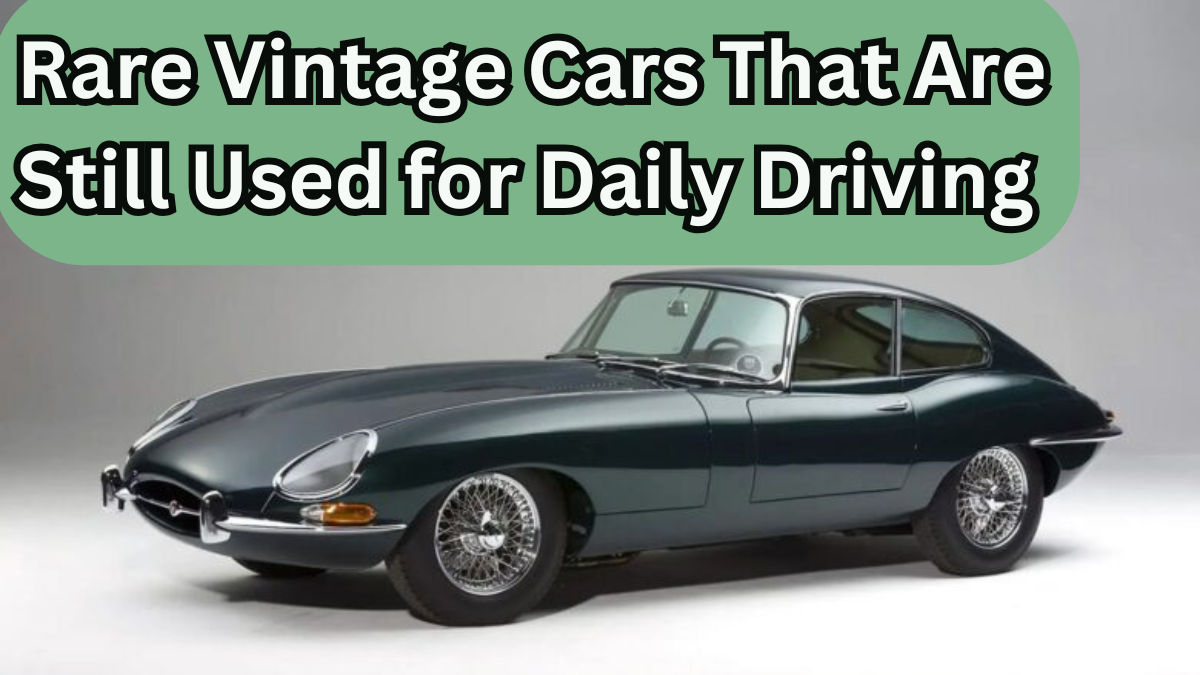In today’s fast-paced automotive world, where electric vehicles and tech-loaded cars dominate, it’s refreshing to see a piece of history still moving on modern streets. We’re talking about rare vintage cars still in daily use—vehicles that defy the passage of time with grace and grit.
These aren’t just showpieces tucked away in garages. These are classic cars on road, lovingly maintained by their owners and still running smoothly in everyday traffic.

Why Do People Still Drive Vintage Cars?
Driving a vintage car daily isn’t just about nostalgia. It often reflects a lifestyle choice rooted in:
-
Unique design and personality: Vintage cars carry a distinct look and feel.
-
Mechanical simplicity: Fewer electronics mean less dependency on complex diagnostics.
-
Long-lasting craftsmanship: Many older models were built for longevity.
-
Emotional connection: These cars often hold sentimental value for their owners.
Top Rare Vintage Cars Still in Daily Use
Here are some beloved models of old cars still running that you can still spot navigating modern roads with pride.
| Car Model | Production Years | Notable Feature | Why It Still Runs |
|---|---|---|---|
| Volkswagen Beetle | 1938–2003 | Iconic design & simple mechanics | Easy-to-maintain engine, parts availability |
| Mercedes-Benz W123 | 1976–1985 | Known for durability | Overbuilt and still runs with minimal fuss |
| Volvo 240 | 1974–1993 | Boxy but reliable | Long-lasting engine, simple structure |
| Datsun 240Z | 1969–1978 | Early Japanese sports car | Lightweight, mechanically straightforward |
| BMW E30 (3-Series) | 1982–1994 | Classic German engineering | Performance meets practicality |
| Chevrolet El Camino | 1959–1987 | Car-truck hybrid loved by collectors | Strong V8s, often used as weekend cruisers |
These cars are perfect examples of rare vintage cars still in daily use, delivering both performance and nostalgia on modern roads.
How Owners Keep These Old Cars Still Running
Maintaining classic cars on road every day requires extra care. Here’s how passionate owners manage it:
Key Maintenance Practices
-
Routine oil and fluid changes
-
Use of original or compatible replacement parts
-
Regular rust prevention treatments
-
Hands-on mechanical knowledge and DIY upkeep
Many vintage car drivers are skilled in basic automotive repairs, making maintenance part of the overall experience.
Stories from Everyday Vintage Car Drivers
“My 1983 Volvo 240 has over 400,000 miles on it and still takes me to work every morning. It’s dependable and reminds me of simpler times.” — Martin R., Seattle
“Every Saturday, I take my old Beetle to the local market. It’s more than a car—it’s a family heirloom.” — Liza M., San Diego
These aren’t just vehicles—they’re time capsules and emotional companions that bridge generations.
Should You Consider Daily Driving a Vintage Car?
Owning and using a vintage car daily has its pros and cons.
Pros
-
Timeless aesthetics and classic road presence
-
Often cheaper insurance
-
Simpler mechanics for DIY maintenance
-
Deep sense of character and individuality
Cons
-
Lacks modern safety features
-
Potential for higher maintenance frequency
-
Lower fuel efficiency
-
Parts may be harder to find for certain models
That said, for many enthusiasts, these trade-offs are well worth the joy of daily driving a classic.
Final Thoughts
Spotting rare vintage cars still in daily use is like watching a piece of history roll by. These vehicles are more than machines—they’re symbols of passion, resilience, and timeless design.
If you’ve ever dreamt of owning an old-school ride, it might just be the perfect time to bring one home and hit the road in style. After all, there’s something irreplaceable about seeing old cars still running like they were built yesterday.
Frequently Asked Questions (FAQs)
1. Are vintage cars reliable for daily driving?
Yes, many vintage cars are reliable, especially those with a track record for durability. Routine maintenance and proper care are key to keeping them on the road.
2. Is it expensive to maintain old cars still running?
It can be, depending on the model. However, many enthusiasts save on costs by handling minor repairs themselves and sourcing affordable parts from vintage auto specialists.
3. Can vintage cars meet today’s environmental standards?
Some older cars do not meet modern emission requirements, but many regions offer exemptions or classic car registrations that accommodate them.
4. Why are rare vintage cars still in daily use today?
They’re beloved for their timeless charm, build quality, and mechanical simplicity. For many drivers, nothing beats the feeling of driving a well-preserved piece of history every day.
Click here to learn more
